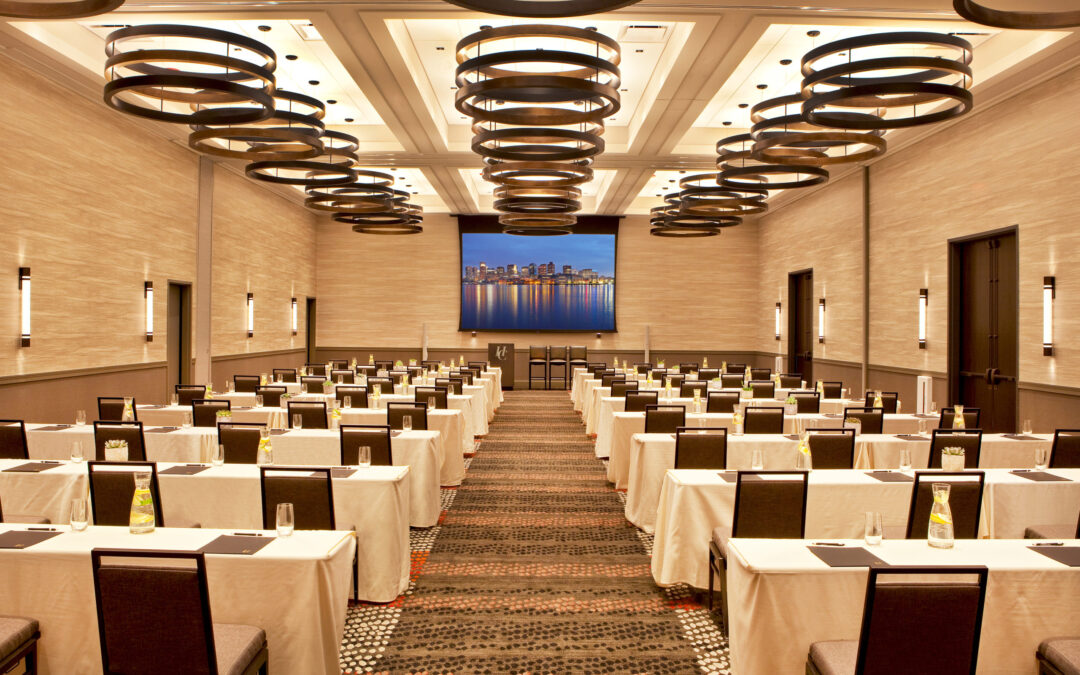Corporate offsites – the phrase conjures images of everything from “mandatory fun” with colleagues to long and exhausting days debating strategy with peers. Rarely are the images something that entice people to sit up and shout, “YEA!” But what if the reality could be something YEA! worthy?
That’s exactly what the authors of the recent HBR article, “Why Offsites Work – and How to Get the Most Out of Them,” describe and offer a guide to accomplish.
Offsites May Be the Answer to the WFH vs. RTO Debate
Offsites aren’t new but they’ve taken on a new role and new significance as companies grapple with how to manage Work from Home (WFH) and Return To Office (RTO) policies.
As with most things in life, the pendulum swings from one extreme to another until eventually, finally, landing in a stable and neutral midpoint. When the pandemic hit, we swung from every day in the office to every day at home. Then society opened back up and corporate landlords came calling for rent, whether or not people were in the offices, so we swung back to Return to Office mandates.
Offsites, the authors suggest, may be the happy medium between the two extremes because offsites:
“give people opportunities for interactions that otherwise might not happen. Offsites create unique opportunities for employees to connect in person, forming new relationships and strengthening existing ones. As a result, offsites help people learn about others’ knowledge and build interpersonal trust, which are both critical ingredients for effective collaboration.”
Offsite Connections Lead to Collaborations that Generate ROI
After analyzing eight years of data from a global firm’s offsites and 350,000 “instances of formal working relationships” for 750 employees, the authors found that intentionally designed offsites (more on that in a moment) yield surprisingly measurable and lasting results:
- 24% more incoming requests for collaboration amongst attendees post vs. pre-offsite (silos busted!)
- 17% of new connections were still active two years after the offsite (lasting change!)
- $180,000 in net new revenue from collaborations within the first two months post offsite (real results!)
The benefits event extended to non-attendees because they “seemed to get the message that collaboration is important and wanted to demonstrate their commitment to being collaborative team players” and “likely identified new collaborators after the offsite through referrals.”
How to Design Offsites That Get Results
Four key strategies emerged from the authors’ research and work with over 100 other organizations:
- Design for the people in the audience, not the people on stage. Poll attendees to understand their specific needs and goals, then design collaborative activities, not management monologues.
- Design for the new hires, not the tenured execs. Create opportunities for new hires to meet, connect with, and work alongside more experienced colleagues.
- Set and communicate clear goals and expectations. Once the offsite is designed and before it happens, tell people what to expect (the agenda) and why to expect it (your design intentions and goals). Also, tell them how to make the most of the offsite opportunities by thinking about the skill and network gaps they want to fill.
- Track activities to measure ROI. The connections, collaborations, and commitments that start at the offsite need to continue after it in the form of ongoing communication, greater collaboration, and talent engagement. Yes, conduct a post-event survey immediately after the event but keep measuring every 2-3 months until the next offsite. The data will reveal how well you performed against your goals and how to do even better the next time.
Offsites can be a powerful tool to build an organization’s culture and revenue, but only if they are thoughtfully designed to go beyond swanky settings, sermons from the stage, and dust-collecting swag and build the connections and collaborations that only start when people are together, in-person, outside of the office.
